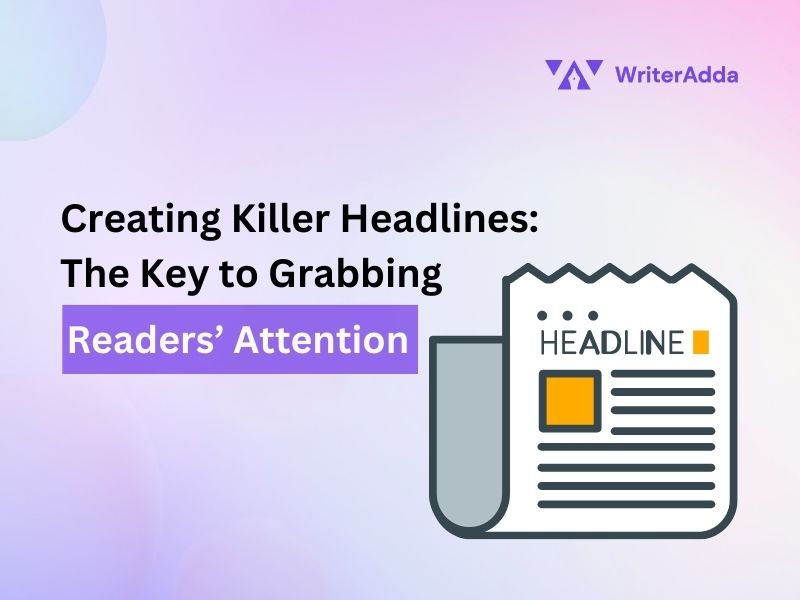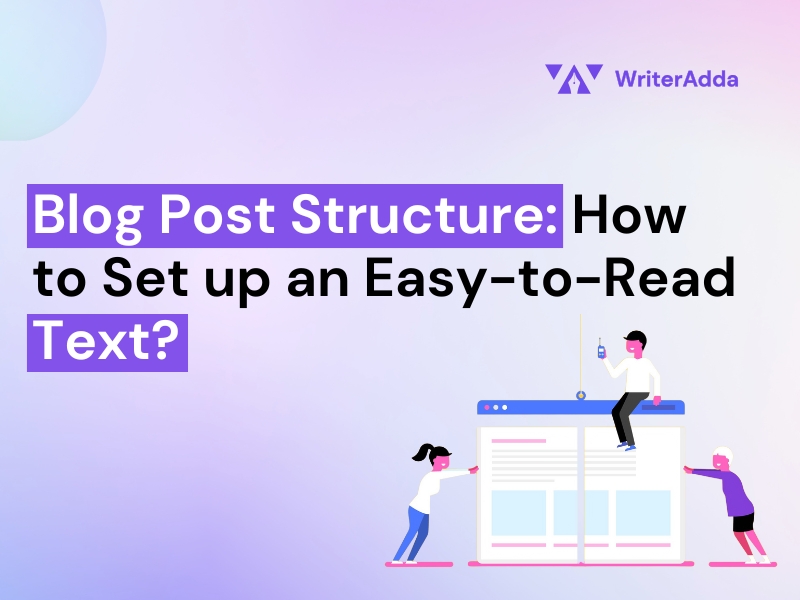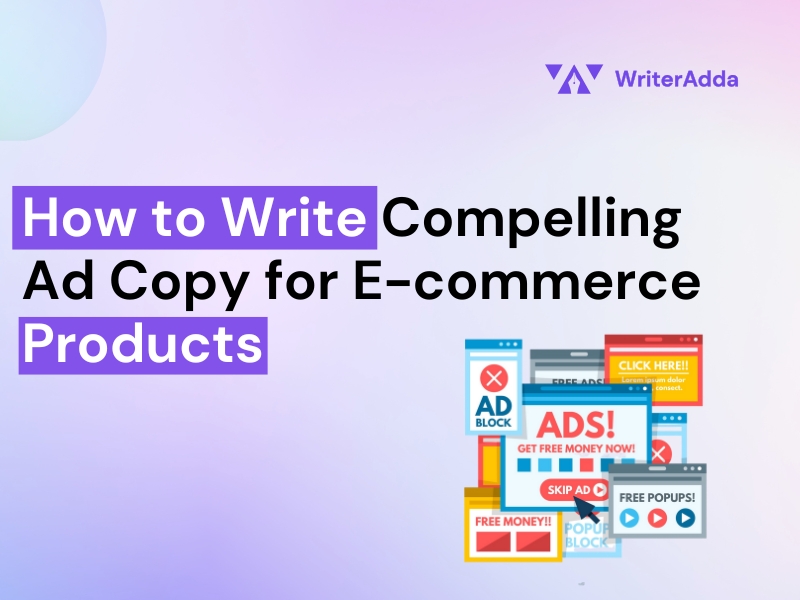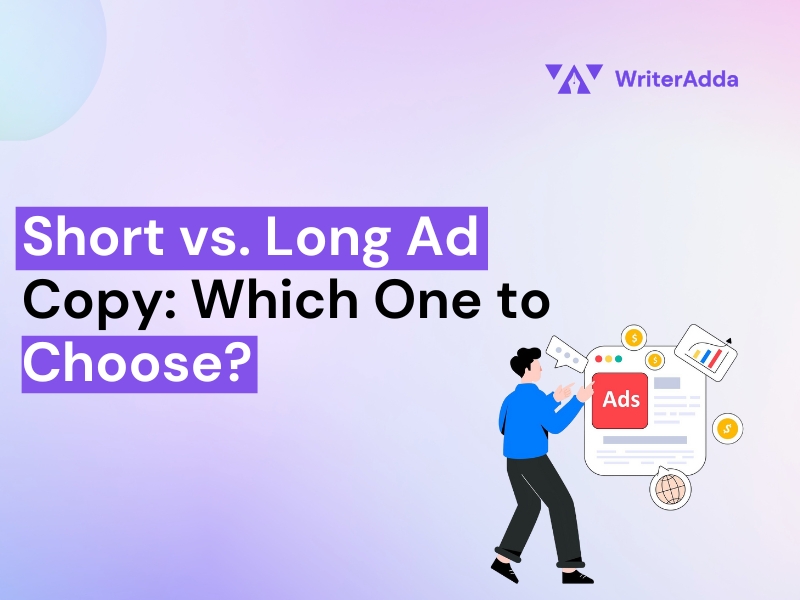The significance of crafting compelling, clickable headlines for blog posts has grown significantly along with content marketing initiatives for contemporary brands. The title of your writing should catch the reader’s eye and encourage them to keep reading, whether it’s for a blog post, email blast, thought leadership article, or press release.
The headlines of your content are crucial as they determine if your audience will read it. In the digital age, headlines must capture readers’ attention amidst constant information. Creating unique and compelling headlines is now more important than ever to inspire continued reading.
We receive a lot of advertisements on our devices from different businesses trying to grab our attention. So, how to write headlines is very important for writers. For a customer, it is difficult to find crucial information that enhances life. Marketers must have distinguishing characteristics to stand out from the competition and persuade readers to read their material. To differentiate oneself from competitors and capture a reader’s interest, inventiveness is necessary.
What Counts as a Headline?
One of the most fundamental components of a news item, article, or advertisement is the headline. In a fast-paced world, customers have the right to determine whether they are interested in your material. They will move on if the headline doesn’t catch their attention immediately. But well-crafted headings attract readers’ interest and urge them to read the entire article.
In conventional newspapers, the story is considered more important than others if the headline is more prominent (in font size). This practice is still being used on several online platforms.
An article may occasionally contain a second headline, also referred to as a subhead. The purpose of this title, which is slightly smaller than the main headline, is to offer details and support the main headline.
What Are The Characteristics Of An Effective Headline?
A headline should be compelling enough to draw the readers in. And below are some pointers to make a headline effective in the most ideal way.
• It is genuine. Don’t make up a headline to pique readers’ curiosity. They will become irritated and have a negative impression of your site when they click on the page and learn that the headline doesn’t adequately describe the post’s content. Continued use of this tactic will turn visitors away from your website. Most likely, you’ve read or heard of a “clickbait” article. Clickbait headlines typically purposefully mislead readers or offer little context for the article’s substance.
• It is easily comprehended. Ensure your viewers can grasp the headline the first time they see it by not making it extremely smart or complex. To avoid coming across as arrogant, it’s important to not make your readers feel unintelligent or overwhelmed by the language in your post.
• It is correctly written. Few things incite reader mistrust more quickly than a subpar headline.
• It expresses the tone of the article. The headline should create the tone as much as needed to accurately reflect the article’s substance. Is there a significant subject covered in the article? Is it a festive, heart-warming tale? An article on DIY projects?
A headline is responsible for just being between 60 and 100 characters or 16 and 18 words. Therefore, it would help if you use caution while creating the headlines for each of your publications.
How To Write Catchy Headlines
A brilliant headline will occasionally appear in our heads like a beam of sunshine peeping through the clouds. However, most of the time, we must merely stare at a blank screen before words begin to appear. Follow the checklist mentioned below to craft compelling headlines
• When you’re done with your content, write your headline
A summary of something that hasn’t yet been written is impossible. Although you may believe you have a terrific headline (and you should definitely have it in your back pocket), you won’t know until you’ve written what you wanted to say and carefully revised it. Consider the headline as the cherry on top: The cake must be completely cooled before you can put it on top.
• Consider the fundamentals.
The “who,” “what,” “where,” “when,” “why,” and “how” of the narrative must all be covered in any article. Consider these details about your post and choose the one you feel is most important. The “who” and “what” (and perhaps the “where”) of a murder, for instance, will be the main points of discussion. However, the article will eventually address the when, why, and how. They are not the most crucial factors.
• Don’t divulge too much information.
Your headline should provide just enough information to persuade the reader to read the rest of the piece, but not so much that it becomes the only source of information. It resembles seeing a movie trailer where the entire narrative is revealed.
• Don’t Use Passive Voice
Use passive voice as little as possible. The text is more legible with the appropriate use of active voice. Try creating a headline using concise action verbs. When choosing a verb, go for the one that completely captures the activity (as opposed to selecting a near synonym).
• Try not to be overly creative.
Avoid attempting to be too witty or cute. Don’t force something if it doesn’t come naturally. When you and the title try too hard, your viewers will notice, diverting focus from the content.
• Make use of your feelings.
A technique to capture your readers’ attention is appealing to their emotions. Consider the emotion(s) your piece makes readers feel, if applicable.
• Short and sweet is best.
In today’s fast-paced digital world, readers have short attention spans and are often overwhelmed with information. As a result, making your headlines brief and direct can boost the likelihood that people will read your content.
Short headlines are easier to remember and read, and they can help your material stand out in the sea of information that the internet is. Readers may lose interest as long headlines may be chopped off in search results or social network shares. Instead, aim for headlines that are 8 to 12 words long.
TACT Test
You’ve created a reasonably strong headline but still feel like you are not quite finished. Then it’s time to apply the TACT test. TACT stands for Taste, Attractiveness, Clarity, and Truth.
Columbia University describes the TACT Test as follows:
• Taste—Is the headline written in good taste?
It matters how your target audience interprets your headline. You don’t want people to take offense if they misread the headline. They will be rejected if they offend the reader.
• Attractiveness—Does it capture the reader’s attention?
A title that doesn’t immediately grab the reader’s attention isn’t performing its job. It must be truthful and appeal to their senses so they will click or scroll to read the entire article.
• Clarity—How well does it summarize the article?
If the headline is confusing, people may not read the article even if it is well-written. A good headline should be clear and easy to understand, summarizing the article’s content.
• Truth—Does it tell the truth?
We’ve emphasized numerous times in this article how crucial truth is when it comes to article headlines (and content in general) since, like in all relationships, developing trust with your audience is crucial. They will eventually discover if you are lying to them outright, at which point they will stop visiting your site.
Observations from a 3-Million Headline Study
HubSpot and Outbrain conducted an analysis of over 3 million paid link headlines from Outbrain’s network of 100,000+ publisher sites to find out which types of headlines can improve CTR, reader engagement, and conversions. The results of their study are outlined below.
• Headlines That Encourage Clicking
The CTR for headlines containing the word “who” was 22% higher than without it, while the CTR for titles containing “why” fell 37%. When creating headlines, emphasize who rather than why to capture readers’ attention. The fact that titles containing the term “photo(s)” scored 37% better than those without this phrase suggests that people respond to pictures.
• Headlines that are unclickable
According to the study, “How to” headlines fared 49% worse than titles without. The CTR for titles, including the word “tip”, decreased by 59% as well. The CTR was also lower for headlines that used the terms “trick,” “simple,” “secret,” “best,” “magic,” and “amazing.”
Additionally, titles that addressed readers directly by utilizing pronouns like “you,” “your,” and “you’re” underperformed by 36% compared to headlines lacking these words. A lower CTR was also observed for headlines including words like “need” or “now,” which suggest a sense of urgency.
Do you ever wonder why these words put readers off so much? The reason these once-popular keywords are no longer effective in content is that click baiters and publishers have overused them, causing readers to lose trust in them.
• Headlines that encourage reader interaction
Once a reader clicks, you want them to stay on your blog or website to read more of your writing. So, what kinds of headlines can you use to do that?
Surprisingly, the study found that utilizing the term “amazing” received greater post-click engagement levels for readers who click through. The word “amazing” was a click-turn-off for the majority of readers. Even while “amazing” might only be able to draw in a limited audience, they are probably more interested readers.
• Headlines That Aren’t Interesting
The use of phrases like “need,” “tip,” “trick,” “simple,” “easy,” and “secret,” as well as superlatives like “worst,” hurt engagement. For instance, words like “worst” or “never” reduced page views per session by 59%.
• Article Headlines That Work
Content marketing aims to persuade readers to engage with your content after their initial click, and become customers.
The term “need” degrades engagement and CTR performance, but it increases conversion rates. Another headline that performs well is bracketed descriptions, which generate 112% more conversions than headlines without one.
• The Ideal Length of a Headline
The study also indicates that you should limit your headlines to around 140 characters to make them tweetable to increase social sharing. Use fewer than 65 characters if you want to rank in search results to prevent your headlines from being condensed.
Additionally, you should put the most crucial information in the headline early to encourage people to click through and continue reading. Different strategies may be effective for different industries or areas, just like with anything else. It’s important to constantly experiment, make changes, and find out what strategies work well for your material.
Conclusion
As readers, we have no idea how much time or work the author spent creating the ideal title for their piece. We only know that it drew us in and encouraged us to read the article.
Writing effective headlines can be a skill; some people are better at it than others and can sum up a story with just the right words. Always use the TACT Test when writing headlines. Do not publish any articles until the TACT Test has been completed. But like with everything, perfectionism comes with practice. Your article’s headline significantly impacts whether or not people read it. Therefore, even if you initially discover that you cannot produce excellent headlines, it will begin to flow naturally to you by continuing to keep the aforementioned factors in mind.




